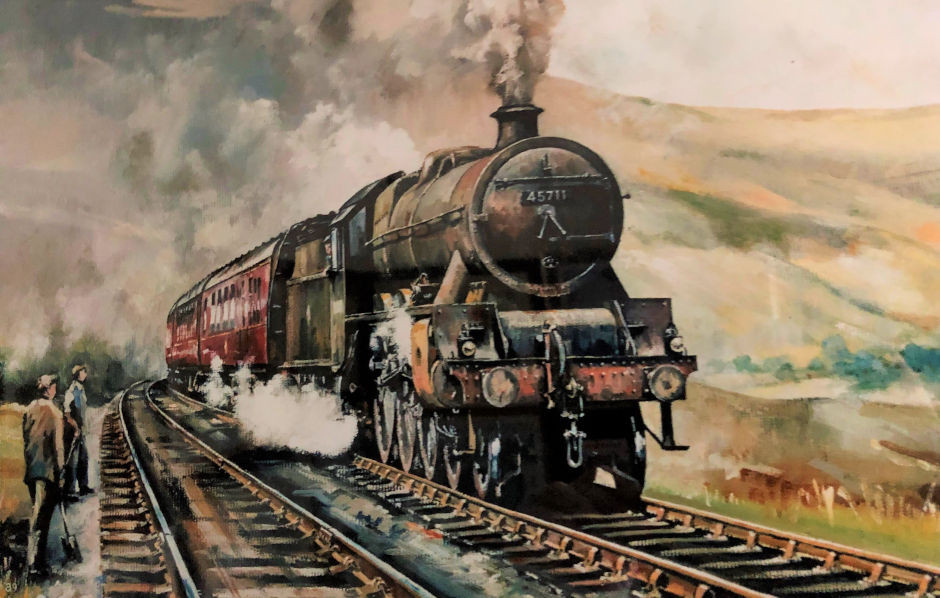
Similar to the collector of vinyl records, many collectors of railwayana are drawn by the nostalgia factor, perhaps because the railway network opened Britain up in a way that had never been seen before, allowing our parents and grandparents to enjoy day trips and holidays to such seaside resorts as St. Ives, Torquay and Scarborough. Today, with the passenger railway having passed its 200th anniversary, interest in this varied area of collectables does not seem to be waning in the least. But, what should we be collecting? And where can we find it?
The ‘Golden Age’ of the railway is rooted in the first half of the 20th century, when steam locomotives were king, and the most collectable items date from this period. Popular items include the locomotive nameplate – naming engines was a common practice – and those from the 1950s and 1960s can realise good prices as they were often saved when the locomotives were scrapped; it was also at this time that steam engines started to be replaced with diesel engines, adding to the appeal of the nameplate. Where an engine did not have a name, it would always have a number and these number plates, while not as expensive as the nameplates, are still very collectable.
Following closely behind the engine nameplate and staying with the name theme, are station nameplates. With the streamlining of the network, many smaller branch lines were closed with the stations along them becoming defunct. With designs very much of the time, these station nameplates are sought after by collectors and hobbyists who are looking for a piece of railway history, and they can vary widely in price at auction from a few hundred pounds to several thousand.
Railway artwork is also a popular area for collectors of railwayana and this encompasses metal wall signs and pictorial posters, as well as carriage prints. Where pictorial posters are concerned, their value will continue to increase as the presence of digital advertising at stations becomes more and more prevalent. The artwork that was displayed in carriages was produced by some talented artists, and depicted British landscapes. Artists to look for include Claude Buckle who painted 26 carriage prints between 1952 and 1957, as well as Leonard Squirrell, Rowland Hilder and Henry Rushbury who produced work in the mid-20th century. Prior to this, from the late 19th century, railway companies displayed sepia, colour-tinted and monochrome photographs of scenes from around the country.
Railway ephemera is also collectable and much more accessible to the beginner collector, with many a railwayana collection having been started with a paper timetable. Of course, as time goes on, examples remaining in good condition will become harder to find and therefore more sought after. With the last ever printed copy of the National Rail Timetable having been published in 2019-2020, even those dating from the latter half of the 20th century will slowly begin to increase in value.
For those collectors who are keen to maintain a more fluid focus to their collection, hardware railwayana offers endless opportunities. Defined as durable equipment, hardware railwayana consists of tools, machinery, lanterns, and badges, as well as dining carriage items.
The popularity of railwayana collectables has led to many specialist auction houses now offering regular railwayana sales. The specialist nature of such salesrooms means, however, that these auctions often feature higher-priced pieces, while with online auction sites, it can be difficult to establish provenance, history and even authenticity.
For collectors with a list of items they are looking for, buying from a reputable antiques centre such as Hemswell, makes perfect sense; all our dealers have access to our dealer portal where we can put a call-out for specific items. As dealers check in to the portal, any who can satisfy the request will be able to respond.
Additionally, there is never any pressure to purchase – collectors can view online without visiting the centres in person and our dedicated staff are happy to help with any email enquiries. Collectors visiting our centres can easily spend the day browsing our four buildings, each of which contains items of railwayana, with the largest collection held in Building 2. Indeed, many of our visitors combine their trip with time in the beautiful city of Lincoln, making their visit part of a great day out.